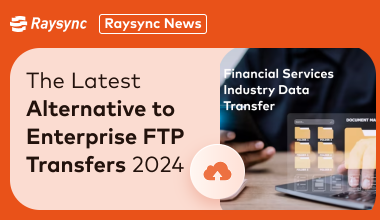[KNOWLEDGE EXPLAINED] What are the main differences between public and private clouds?
January 12, 2024Public cloud and private cloud are two commonly used concepts in the field of cloud computing. As cloud computing technology continues to develop, more and more organizations and individuals are paying attention to and utilizing these cloud services. However, not everyone has a clear understanding of the meaning and differences between public cloud and private cloud. This article will introduce the meanings of public cloud and private cloud and analyze the differences between them.
Part 1: What is the meaning of private cloud?
Private cloud refers to a cloud computing system built on dedicated hardware and software. It is owned and controlled by a single organization or enterprise, running on their internal data centers or private servers. Private cloud provides a secure and flexible way to store and process an organization's sensitive data and applications. Through private cloud, organizations can customize and manage their cloud computing resources according to their needs and security requirements. Compared to public cloud, private cloud puts more emphasis on data security and control, making it suitable for organizations that have high requirements for data confidentiality and integrity. And these features include:
Exclusivity: Private cloud is a cloud computing system owned and controlled by a single organization or enterprise. Its hardware infrastructure and software resources are customized for that organization and not shared with other organizations.
Security: Private cloud provides higher data security because all cloud resources run within the organization's internal data centers or private servers, without sharing storage or computing resources with other entities. This reduces the risks of data leakage and security vulnerabilities. Raysync adopts AES-256 bank-standard encryption technology and TLS data transmission encryption, supports the breakpoint resume, retransmission, and multiple file verification (Hash, Rsync check), to ensure the integrity and security of data transfer.
Customization: Private cloud allows organizations to customize and manage cloud computing resources according to their own needs and security requirements. Organizations can choose appropriate hardware and software configurations, set security controls and access permissions to meet specific business needs. Raysync can highlight a client's brand and style according to their requirements.
Flexibility: Private cloud offers flexible resource allocation and utilization. Organizations can scale cloud resources up or down according to their needs to accommodate different business demands and peak traffic, achieving higher business flexibility and agility.
High reliability: Private cloud typically has high reliability and availability as it utilizes redundancy and backup mechanisms to protect data and applications, enhancing system reliability and fault tolerance.
Part 2: What is the meaning of public cloud?
Public cloud is a cloud computing system built on shared infrastructure. It is provided and managed by third-party service providers and offers cloud services to various organizations and individuals over a public network. Public cloud is accessible to users worldwide, which provides high scalability and flexibility. Public cloud typically offers various service models, including Infrastructure-as-a-Service (IaaS), Platform-as-a-Service (PaaS), and Software-as-a-Service (SaaS). The key characteristics of public cloud are as follows:
Shared infrastructure: Public cloud is based on shared infrastructure, which is provided and managed by third-party service providers. Different organizations and individuals can access and use these shared cloud resources through a public network.
Multi-tenancy: Public cloud supports multi-tenancy, meaning that multiple users can share the same set of infrastructure and resources. This allows public cloud to offer cost-effective and highly scalable services to satisfy users with different scales and needs.
Scalability: Public cloud has high scalability and can dynamically allocate, and release computing resources based on user demand. Users can increase or decrease the scale of cloud resources according to their needs, enabling flexibility to adapt to business fluctuations.
Cost-effectiveness: Public cloud typically operates on a pay-as-you-go basis, allowing users to utilize and pay for computing resources as needed. Compared to establishing their own data centers or private clouds, public cloud offers lower investment and operational costs.
Multiple service models: Public cloud provides multiple service models, including Infrastructure-as-a-Service (IaaS), Platform-as-a-Service (PaaS), and Software-as-a-Service (SaaS). These different levels of service models can cater to diverse user needs and technical abilities.
Part 3: Differences between private and public cloud
Control and ownership: Private cloud is owned and controlled by a single organization, allowing them to have full control over the configuration and management of cloud computing resources. In contrast, public cloud is provided and managed by third-party service providers, and users can only use the services and resources provided by the provider, without direct control over the underlying infrastructure.
Security: Private cloud places more emphasis on data security compared to public cloud. It runs in a restricted environment where only authorized personnel can access sensitive data. Public cloud requires security measures to protect user data, but there may be a small potential security risk as multiple users share the same infrastructure.
Customization: Private cloud allows organizations to customize and manage cloud computing resources according to their needs and security requirements. They have more flexibility in setting access permissions and security controls. Public cloud generally has less customization, and users need to use and configure services according to the provider's specifications.
Cost: Private cloud typically requires higher investment and management costs as organizations need to purchase and maintain hardware equipment and configure dedicated software resources. Public cloud is often billed on a pay-as-you-go basis, where users only pay for the actual resources used, avoiding significant upfront investment and operational costs.
Scalability: Public cloud has high scalability, allowing users to dynamically allocate and release computing resources as needed. In contrast, private cloud has limited scalability as it is constrained by the organization's owned hardware and resources.
Availability: Public cloud generally provides high availability and fault-tolerant mechanisms to ensure service continuity through redundancy and backup technologies. Private cloud can also achieve high availability, but the implementation methods and mechanisms may vary.
Conclusion
In conclusion, public cloud and private cloud have significant differences in control and ownership, security, customization, cost, scalability, and availability. As a large file transfer tool for private clouds, Raysync guarantees the security and reliability of enterprises when transferring files. The choice between public cloud and private cloud depends on the organization's needs and prioritized factors, such as data security, cost control, and business flexibility.
You might also like

Raysync News
January 26, 2024FTP in the modern enterprise environment is struggling, this article will explore several superior than FTP enterprise file transfer tools, to help enterprises quickly choose the right transfer tool.

Raysync News
February 13, 2024File transfer has become an integral part of the financial services industry. Between this paper, it can be will be explored to deal with big data financial services volume in the transmission industry file transfer.
Raysync News
November 29, 2023Large file transfers have become an essential tool between businesses or organizations. This article introduces two of the more popular large file transfer tools on the market today.